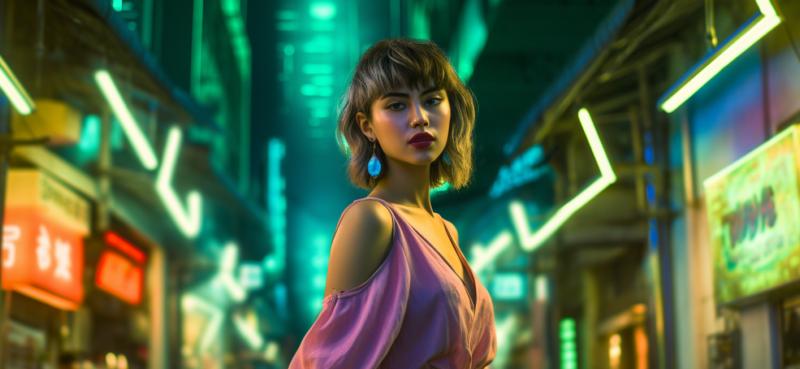A Journey Through Hong Kong's Fashion History and Current Trends

Introduction
I have taken it upon myself to embark on a daring and treacherous journey through the ever-shifting landscape of Hong Kong's fashion scene. Yes, my friends, prepare to feast your eyes on a tale that spans the ages of fashion history, and peruse the latest trends to be found among Hong Kong's sartorially inclined. But worry not, for I shall be your fearless guide through this whirlwind of style and substance.Remnants of British Influence
Hong Kong's unique fashion history is heavily influenced by its past as a British colony. The British, like their other colonies, left indelible marks on Hong Kong's culture, including the realm of fashion. From the 19th century until the late 20th century, the British had an iron grip on Hong Kong, and their fashion seeped into the hearts and minds of the city's inhabitants. This British influence is most apparent in the classic and elegant tailoring that has remained a staple in Hong Kong's fashion scene for both men and women.Although the British have long since departed, their influence on Hong Kong fashion can still be seen today in the bespoke suits and impeccable tailoring that are synonymous with the city's sartorial style. Many of the city's tailors have even trained in the prestigious and well-known tailoring schools of London, the likes of which have produced fashion powerhouses such as Savile Row. It is not uncommon to find handmade suits crafted by skilled artisans, made with the kind of care and precision that would make even the most jaded of fashion critics swoon.
Hong Kong's Golden Age of Cinema
Moving away from the stuffy, British-rooted tailoring, one cannot discuss Hong Kong fashion without touching upon its golden age of cinema. In the 1960s and 1970s, Hong Kong cinema was considered to be at its peak, with directors such as Wong Kar-wai and his muse Maggie Cheung producing films that captured the hearts of audiences worldwide. This period saw the rise of the iconic Cheongsam dress, which featured heavily in films such as "In the Mood for Love" and became a symbol of Hong Kong's fashion identity.The Cheongsam, or Qipao, is a figure-hugging dress that was originally worn by women in the early 20th century. It has since evolved into a symbol of elegance and femininity, featuring ornate designs and delicate embroidery. The Cheongsam experienced a resurgence in popularity during the golden age of Hong Kong cinema and has remained an enduring symbol of the city's fashion history.
The Streetwear Revolution
In recent years, Hong Kong's fashion scene has seen a shift away from its traditional roots and towards more contemporary and streetwear-inspired styles. This change can be attributed to the influx of foreign designers and styles, as well as the increasing influence of Western fashion trends. Gone are the days of impeccably tailored suits and elegant Cheongsams; in their place, we find oversized hoodies, graphic tees, and sneakers that cost more than a small island nation.Hong Kong's youth are the driving force behind this streetwear revolution, with their insatiable appetite for the latest and greatest trends from abroad. The city's numerous shopping districts are filled with stores selling limited-edition sneakers, edgy streetwear brands, and uniquely Hong Kong designs that seamlessly blend Eastern and Western aesthetics. This new, daring style is a far cry from the traditional Hong Kong fashion of yesteryear, but it is a refreshing change that showcases the city's ability to adapt and evolve.
Thrifting and Sustainability
As the world becomes increasingly aware of the devastating impact of fast fashion on the environment, Hong Kong's fashionistas have begun turning their attention to more sustainable practices. Thrift stores and vintage shops have seen a surge in popularity, as shoppers seek to find unique and eco-friendly pieces that won't break the bank or the planet.- Some popular secondhand shopping destinations include Mee & Gee, a treasure trove of pre-loved clothing, and Midwest Vintage, which specializes in American sportswear and workwear.
- In addition to thrift stores, sustainable and ethical fashion brands have been sprouting up across the city, such as The R Collective, which creates upcycled fashion from luxury brand waste materials, and Noissue, which produces eco-friendly packaging for fashion businesses.
It is clear that Hong Kong's fashion scene is in a state of flux, with its storied past and rapidly changing present coexisting in a fascinating and sometimes volatile mix. As we look to the future, it remains to be seen how the city's fashion identity will continue to evolve, but one thing is certain: Hong Kong will always be a veritable playground for those with an eye for style and a thirst for adventure.
Article kindly provided by foreverinfashion.org
Latest Articles
- Fashion Tourism on Wheels: Curated Shopping Routes Led by Chauffeur Guides
- The Charm of Certainty in a World of Indecision
- Can an Everyday T-Shirt Be Turned into a Modern Heirloom?
- Color, Ceremony, and the Psychology of Celebration
- Styling Graphic T-Shirts for Different Body Types
- Getting Kids to Wear Their Hats Without a Bribe or a Meltdown
- Mastering the Art of Being the Unnoticed Photographer
- Quiet Sportswear Moves Loudly
- Fashion's Most Misunderstood Color Is Brown
- Weight Matters When Cotton Gets Real
- SKU's Out for Summer: Why Your Warehouse Is Melting Down
- Ink as Accessory - How Tattoos Are Replacing Jewelry in Modern Style
- Decoding the Y2K Aesthetic with Style and Sanity
- Why Limited Drops Keep Dripping With Appeal in 2025
- Accessories
- Jewellery
- Footwear
- Skirts and Dresses
- Shirts and Blouses
- Beauty and Makeup
- Fashion Photography
- Sustainable Fashion
- Street Style
- Fashion History
- Fashion Business
- Fashion Styling
- Fashion Events
- Plus-Size Fashion
- Men's Fashion
- Women's Fashion
- Fashion Blogging
- Fashion Trends
- Fashion Retailers
- Fashion Tips and Advice
- Fashion Business Startups
- Fashion Around the World
- Lingerie
- Sportswear
- Weddings

